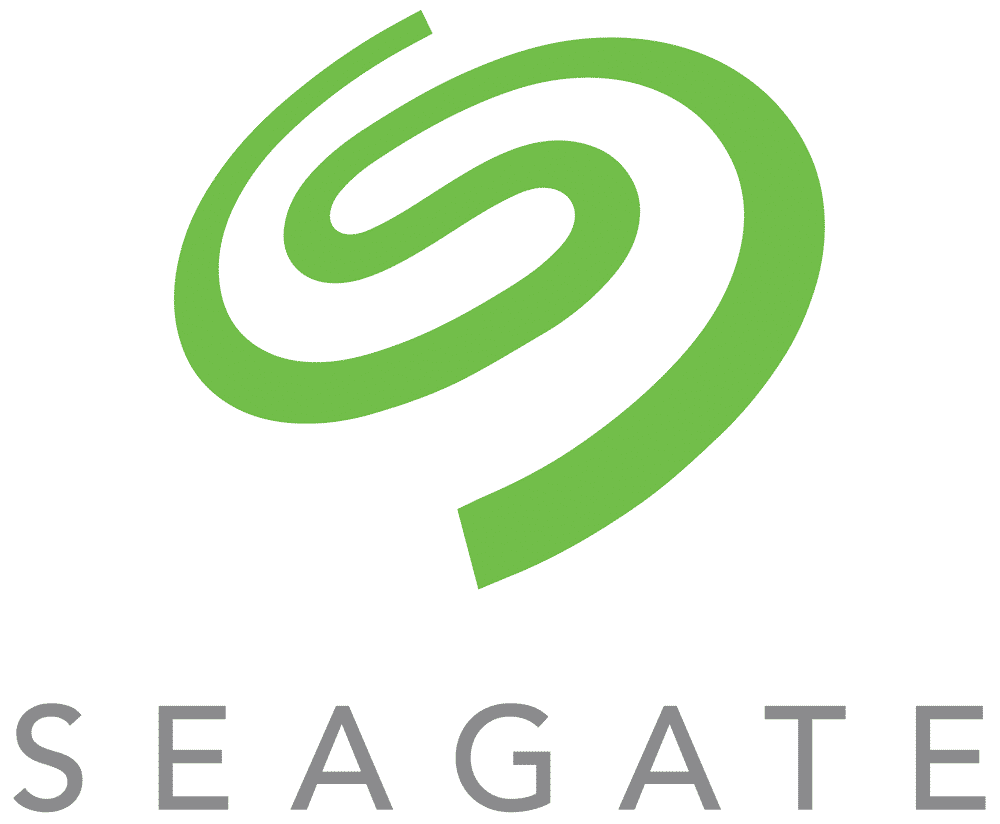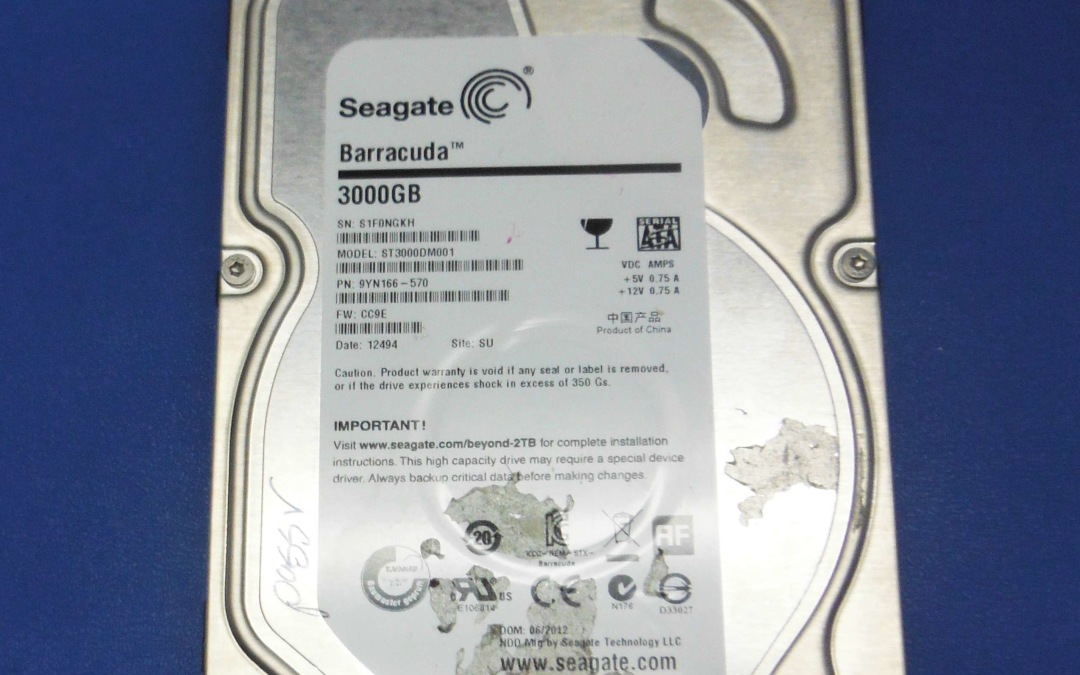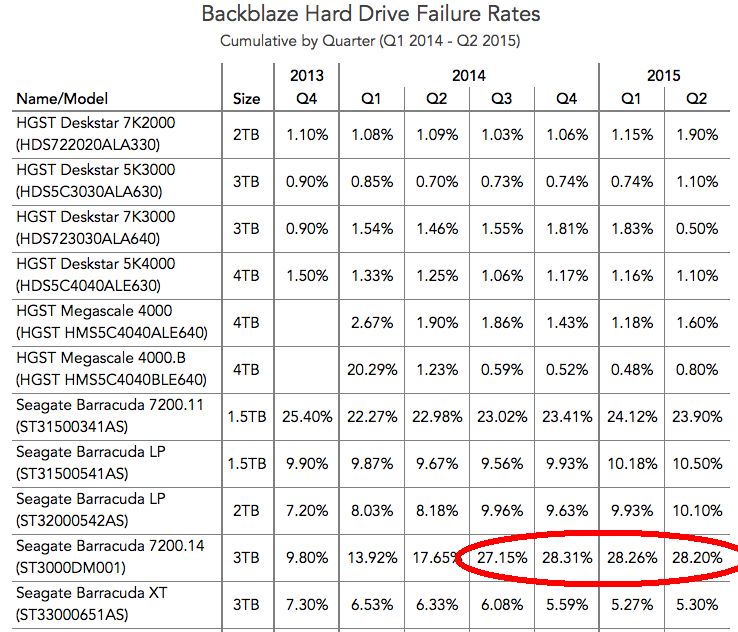
Seagate ST3000DM001 Data Recovery / Loss Warning
Seagate has long been a go-to brand for quality hard drives. Back in the days of 40Gb drives, their Barracuda series drives were some of the fastest and most reliable on the market. At one time it’s all I would buy for my personal use, as I’ve never been a big fan of Western Digital products.
However, as all things do, the story has changed. Today Seagate is seeing some rather serious quality control issues. While Seagate hasn’t publicly commented on the issues, it’s become quite clear that some of their larger series of drives are having problems. Most notably this has affected their 3Tb “DM Series” of drives, including the common ST3000DM001, ST3000DM000, and the ST3000DM002 models.
ST3000DM001 Extreme Failure Rates
The online storage company Backblaze recently published their failure statistics of various hard drive brands including Seagate, WD, and HGST. Unlike other offsite backup companies that typically use enterprise grade SAS drives Backblaze uses consumer grade, low-end drives (along with extra redundancy). So they are able to provide useful statistics that relate to the everyday drives we all use in our desktop machines and external hard drives.
In this graphic you can see the comparison of failure rates of the various brands of drives, and Seagate is far and away the highest of them all. WD on the other hand showed pretty typical failure rates as you’d expect given the tough usage they are subjected to by Backblaze, and HGST (formerly Hitachi) clearly distinguished themselves as the durability winners.
As you can see in this breakdown chart by model, the ST3000DM001 was the worst culprit. As this chart shows the model experienced a near 28% quarterly failure rate. Now some would argue that these drives aren’t designed for the type of usage that Backblaze is putting them under, and that’s technically true. However, what we in the data recovery industry are seeing is exactly the same. Typically we see 10 to 20 times the number of this model as we do of any other’s coming in for recovery. In the last year Seagate ST3000DM001 drives have comprised nearly 25% of the total cases that arrived at our lab.
Other models including the 4Tb ST4000DM001 have faired much better, but still are seeing much higher failure rates than expected. It seems to show an underlying quality issue from the manufacturer.
The High Cost of Cheap HDDs
According to this page on Backblaze’s site, in the three year of running ST3000DM001 drives the company saw 55.3% of them fail. Of the remaining “healthy” drives pulled from the pods which had other failed drives, a large percentage failed their testing that’s normally performed before re-using the drives. The company estimates that they lost approximately $1.14 Million on the decision to purchase this model. They have since completely retired all of these drives and are no longer purchasing 3TB Seagate hard drives.
Apple too seems to have been hit with this issue. For many of their iMac computers which were shipped with this model drive the company is now replacing them completely free. You can visit this page to see if yours is an affected model: Apple 3Tb HDD Replacement Program
It’s uncertain whether Apple is paying for this themselves or if Seagate is being forced to cover the costs as part of a contract agreement. It is clear that this is a known problem to backup companies and computer manufacturers alike. However Seagate still has yet to comment publicly on this issue.
What to do if you have a Seagate ST3000DM001 HDD
If you have this model or any of the similar 3TB DM series drives we recommend you do the following:
- Make & maintain a complete backup of any critical files currently stored on the drive. You’ll want to actively monitor the backup as it progresses as the drive may have already began to develop bad sectors and could fail during the process. So you really should start with the most critical files first.
- As soon as possible replace the drive and don’t use it again for anything mission critical. Perhaps if it’s still good after the backup you might switch and use it as your backup drive, but I wouldn’t trust it. Chances are about 50% that it’ll fail in the first three years of use.
We recommend that us replace these drives with higher quality HGST, Toshiba, or at the very least WD hard drives.
Need ST3000DM001 Data Recovery Already?
We’d be happy to evaluate the drive for you free of charge. This model is particularly difficult to work on any many data recovery professionals struggle with them. It’s been found that a large percentage of issues with this model relate to corrupted firmware code stored in the hard drive service area, or issues with the media cache. Often times data recovery labs mistakenly start replacing components such as the read/write heads when they aren’t actually the problem. Thus further complicating the issues. You’ll want to be sure you pick a data recovery laboratory that is experienced with this model and it’s particular issues.
Data Medics has been working together with other data recovery laboratories including Recovery Force in Canada and Ace Laboratory in Russia to come up with solutions to the complex problems causing these drives to fail. While it is true that not all cases can be recovered, our success rates have improved dramatically as we’ve worked extensively on these.
If you’re interested in us taking a look at a case for you with no obligation please click the contact button below:















